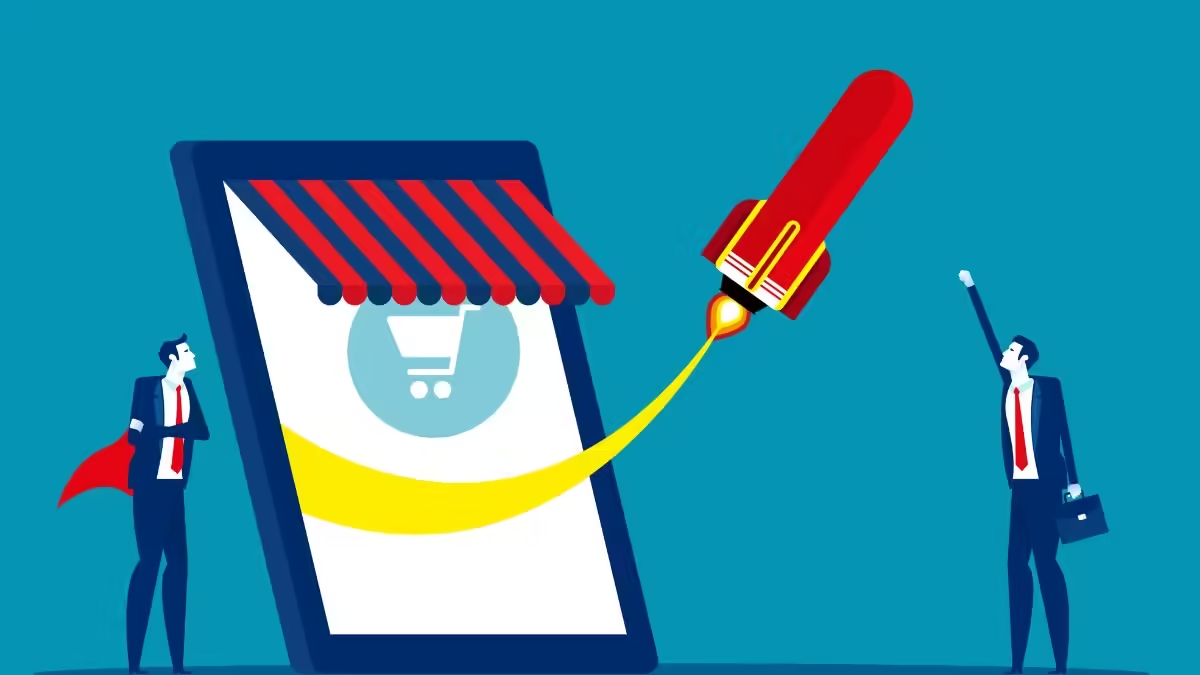If you are an e-commerce startup CEO, you are probably often faced with tight budgets and high expectations. In situations like this, driving rapid sales growth without inflating the ad budget can feel like an uphill task.
However, the key to unlocking exponential growth lies not just in generating more traffic but in making the most out of the traffic you already have.
Conversion Rate Optimization (CRO) is the foundational fix that can turn visitors into loyal customers, ensuring that every kobo spent on driving traffic is well-utilized.
As someone who has spent 12 years running a digital agency and helped clients optimize their websites to generate millions of dollars in sales, I’ve seen firsthand how powerful CRO can be.
I’ve worked with clients whose e-commerce businesses were struggling, but after understanding their target market and optimizing their site for conversion, we saw remarkable turnarounds.
This article will delve into the proven strategies that startup e-commerce CEOs and CMOs in Nigeria can use to drive quick and rapid sales growth through CRO, all without increasing their ad budgets.
We’ll also address common misconceptions and provide FAQs to ensure a comprehensive understanding of these tactics.
Understanding the Importance of Conversion Rate Optimization (CRO)
Before diving into specific strategies, it’s crucial to understand why CRO is essential for e-commerce growth.
Simply put, CRO is the process of improving your website to increase the percentage of visitors who complete a desired action—whether that’s making a purchase, signing up for a newsletter, or filling out a contact form.
While traffic is the lifeblood of any online business, pouring money into traffic generation without a solid conversion strategy is like filling a leaky bucket.
You might see an increase in visitors, but if they don’t convert, you’re essentially wasting your marketing budget. CRO ensures that your site is optimized to convert as many visitors as possible, making every marketing dollar count.
Know Your Customer: The Foundation of CRO
The first step in optimizing your e-commerce site for conversions is to deeply understand your target market.
This knowledge informs every decision you make, from site design to the type of checkout process you offer. Without this understanding, any optimization efforts are akin to shooting in the dark.
Case Study: How WhatsApp Checkout Saved a Client’s Startup From Collapse
One of my clients was struggling to convert traffic into sales. In fact, the ecommerce business was heading for the rocks.
After discussing his target market, I discovered what the problem was. He was buying a lot of traffic, but being a relatively unknown brand, his customers preferred a more personalized shopping experience. They were not just going to hand over cash without talking to a real human being.
We decided to implement a “Checkout with WhatsApp” option, allowing customers to complete their purchases via a platform they were already comfortable with. The result? His store’s sales skyrocketed.
Tip: In Nigeria, where WhatsApp is a widely used communication tool, offering such localized solutions can make a significant difference in conversion rates. Understanding the nuances of your customer base—such as their preferred communication channels and payment methods—can help you tailor the shopping experience to their needs, resulting in higher conversions.
Optimize Your Product Pages for Maximum Impact
Your product pages are the heart of your e-commerce site. They are where visitors decide whether or not to make a purchase. Optimizing these pages is critical for converting traffic into sales.
Key Elements to Optimize:
- High-Quality Images: Ensure your product images are clear, high-resolution, and showcase the product from multiple angles. Including zoom features or 360-degree views can also enhance the shopping experience.
- Compelling Product Descriptions: Write detailed, benefit-driven product descriptions that address the needs and pain points of your customers. Use bullet points for easy readability and include keywords that are likely to be used by your target audience in search engines.
- Customer Reviews and Testimonials: Social proof is a powerful conversion tool. Display customer reviews and testimonials prominently on your product pages to build trust and credibility.
- Clear Call-to-Action (CTA): Make your “Add to Cart” or “Buy Now” buttons stand out with contrasting colors and persuasive language. Ensure the CTA is easily accessible without the need to scroll.
Case Study: SEO Optimization for Product Pages
Another client was burning through their marketing budget without seeing a return on investment.
After analyzing their website, we noticed that their product and category pages were not optimized for search engines. We implemented SEO-optimized content, including targeted keywords, meta descriptions, and internal linking. Within a few months, their organic traffic increased, leading to a significant boost in sales.
Tip: For startups, particularly in Nigeria, optimizing product pages with locally relevant keywords and content can drive organic traffic and conversions without increasing ad spend.
Streamline the Checkout Process
A complicated or lengthy checkout process is one of the main reasons for cart abandonment. Simplifying the checkout process can significantly boost your conversion rate and overall sales.
Steps to Streamline Checkout:
- Enable Guest Checkout: Forcing customers to create an account before purchasing can deter them from completing their purchase. Allowing guest checkout options can reduce friction and speed up the process.
- Reduce Form Fields: Only ask for essential information during checkout. The fewer fields customers have to fill out, the less likely they are to abandon their cart.
- Offer Multiple Payment Options: In Nigeria, payment preferences can vary widely. Ensure you offer a range of payment options, including credit/debit cards, bank transfers, and mobile payments. The inclusion of payment options like Paystack or Flutterwave can cater to local preferences.
- Optimize for Mobile: With the increasing use of mobile devices for online shopping, ensure your checkout process is fully optimized for mobile users. This includes responsive design, easy navigation, and mobile-friendly payment gateways.
Leverage Social Proof and Urgency
People are more likely to make a purchase if they see that others are doing the same. Leveraging social proof and creating a sense of urgency can drive quick sales.
Implementing Social Proof:
- Real-Time Purchase Notifications: Display notifications when other customers make a purchase. This shows that your store is active and trusted by others.
- Customer Reviews: As I mentioned earlier, prominently display customer reviews on product pages. Consider using third-party review platforms for added credibility.
Creating Urgency:
- Limited-Time Offers: Highlight any sales, discounts, or special promotions with countdown timers. This creates a sense of urgency and encourages immediate action.
- Scarcity Alerts: Show the remaining stock for popular items. Messages like “Only 3 left in stock!” can push customers to complete their purchase before the item runs out.
-
Enhance Website Speed and Performance
Website speed is a critical factor in both user experience and conversion rates. A slow-loading site can frustrate visitors and lead to high bounce rates.
Strategies to Improve Site Speed:
- Optimize Images: Compress and resize images to reduce load times without sacrificing quality. Tools like TinyPNG can help with this.
- Use a Content Delivery Network (CDN): A CDN can distribute your website’s content across multiple servers worldwide, reducing the distance data has to travel and improving load times for users, especially in regions like Nigeria.
- Minimize HTTP Requests: Reduce the number of elements on your page that require HTTP requests, such as scripts, images, and CSS files. Combine files where possible and remove unnecessary plugins or scripts.
Personalize the Shopping Experience
Personalization is a powerful way to increase conversion rates. By tailoring the shopping experience to individual users, you can make your site more engaging and relevant.
Personalization Tactics:
- Product Recommendations: Use data from previous purchases or browsing history to suggest relevant products to customers. This can be done on product pages, in the shopping cart, or through follow-up emails.
- Personalized Email Campaigns: Send targeted emails based on customer behavior, such as abandoned cart reminders, product recommendations, or exclusive offers.
- Dynamic Content: Change content on your homepage or product pages based on the customer’s location, browsing history, or purchase history. For example, if a customer frequently buys a particular type of product, highlight similar items on the homepage.
Implement A/B Testing
A/B testing is a method of comparing two versions of a webpage or element to determine which performs better. It’s a critical tool in CRO, allowing you to make data-driven decisions. You need to hire a digital agency or in-house digital marketer to achieve this.
How to Conduct A/B Testing:
- Choose Elements to Test: Common elements to test include headlines, CTA buttons, product descriptions, images, and page layouts.
- Run Tests Simultaneously: Ensure that both versions are live at the same time to avoid skewed results due to time-based factors.
- Analyze the Data: Use tools like Google Analytics or specialized A/B testing software to track the performance of each version. Implement the changes that lead to higher conversions.
Common Misconceptions About A/B Testing:
- Myth: A/B testing is only for large companies with lots of traffic.
- Reality: Even startups can benefit from A/B testing. While the sample size may be smaller, the insights gained can still lead to significant improvements in conversion rates.
- Myth: A/B testing is too complicated.
- Reality: There are many user-friendly tools available that make A/B testing accessible even to those without technical expertise.
Use Analytics to Drive Continuous Improvement
Conversion Rate Optimization is not a one-time task but an ongoing process. Regularly analyzing your site’s performance can help you identify areas for improvement and keep your conversion rates high.
Key Metrics to Monitor:
- Bounce Rate: The percentage of visitors who leave your site after viewing only one page. A high bounce rate may indicate that your landing page content isn’t relevant or engaging enough.
- Exit Rate: The percentage of visitors who leave your site from a particular page. If a specific page has a high exit rate, it may need optimization.
- Average Session Duration: The average time users spend on your site. Longer sessions often indicate higher engagement.
- Conversion Rate: The percentage of visitors who complete a desired action, such as making a purchase. Regularly track this metric to gauge the effectiveness of your CRO efforts.
FAQs and Clarifications
Q: Is it possible to achieve rapid e-commerce sales growth without increasing traffic?
Yes, by focusing on conversion rate optimization, you can turn a higher percentage of your existing traffic into customers, leading to significant sales growth without the need to increase traffic.
Q: How can I improve my website’s conversion rate without spending more on ads?
Implementing strategies like understanding your customer, optimizing product pages, streamlining the checkout process, leveraging social proof, and improving site speed can enhance your conversion rate without additional ad spend.
Q: What’s the biggest mistake startups make when trying to grow e-commerce sales?
One of the biggest mistakes is focusing solely on driving more traffic without ensuring the website is optimized for conversions. This often leads to wasted ad spend and poor ROI.
Q: How often should I conduct A/B testing?
A/B testing should be an ongoing process. Regularly test different elements of your site to identify what works best and continuously improve your conversion rates.
Conclusion
Driving rapid e-commerce sales growth without increasing your ad budget is not only possible but also essential for startups working with limited resources.
By focusing on onsite strategies that enhance conversion rate optimization, you can make the most of the traffic you already have, turning visitors into loyal customers and setting the stage for sustainable growth.
Remember, understanding your customer is the foundation of all successful CRO efforts.
Tailor your site to meet their needs, streamline their shopping experience, and continuously optimize based on data-driven insights. By doing so, you can achieve significant sales growth and set your e-commerce startup on the path to long-term success in Nigeria’s competitive market.
__

Written by Dr Smart Okpi, CEO eBrand Promotion


